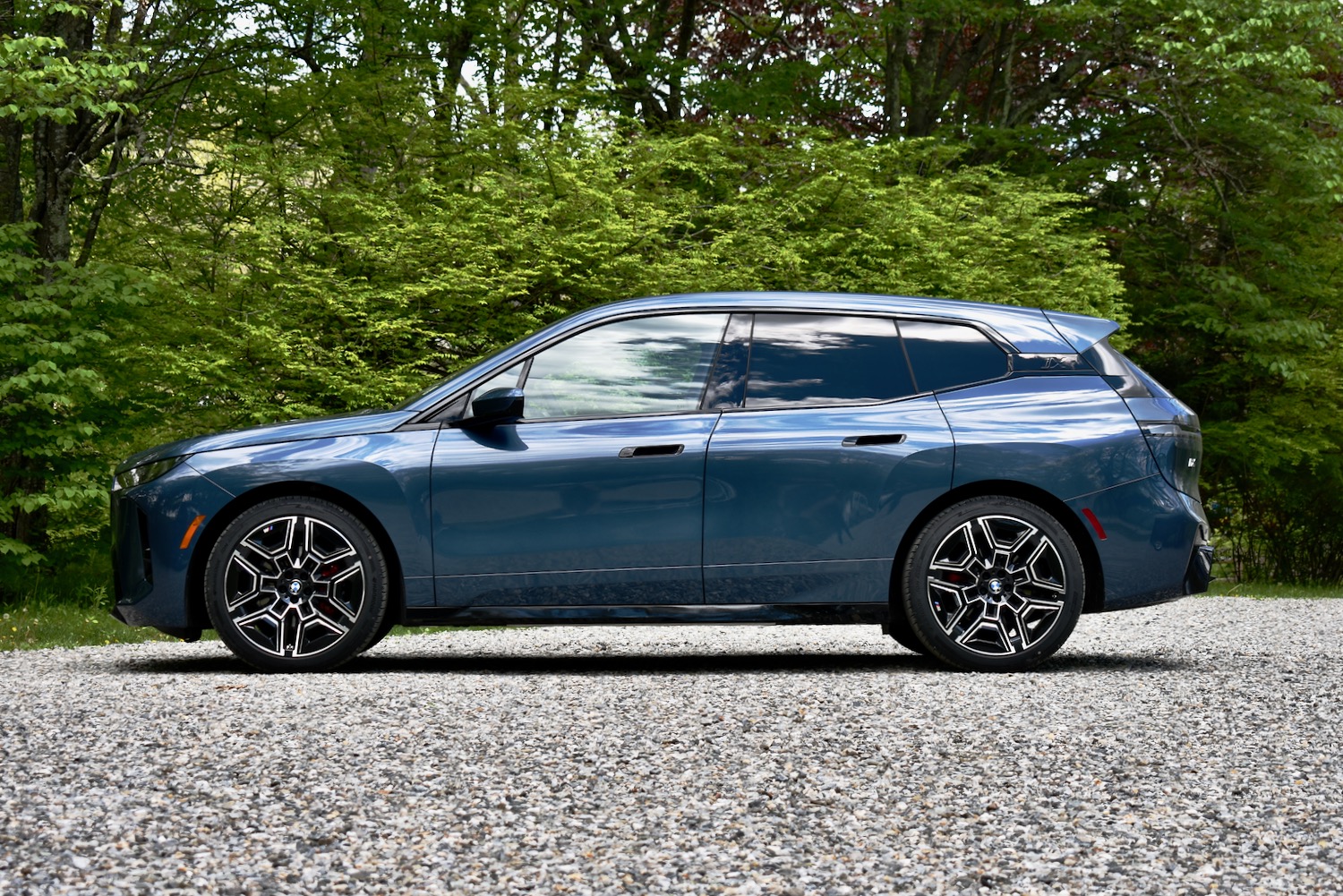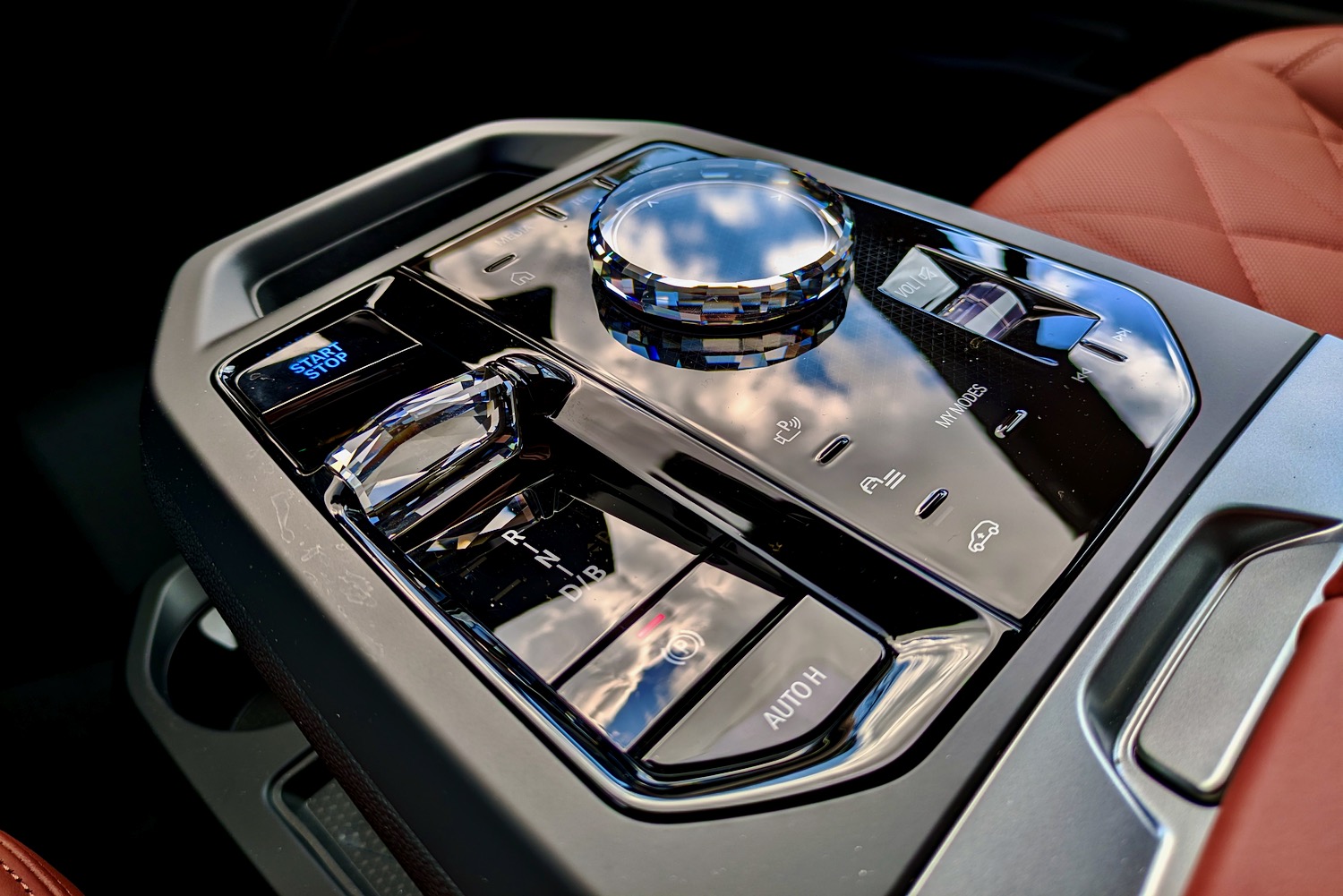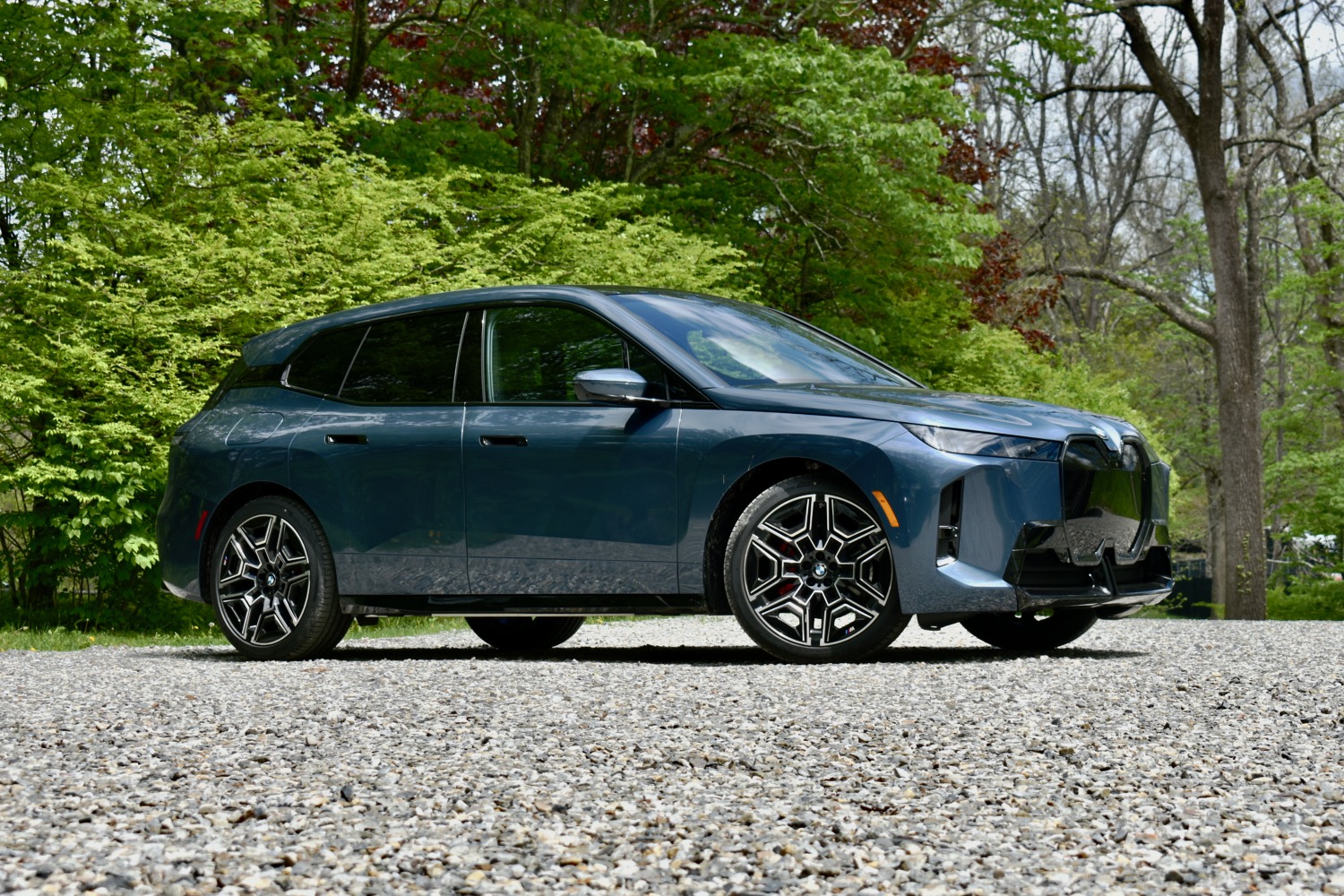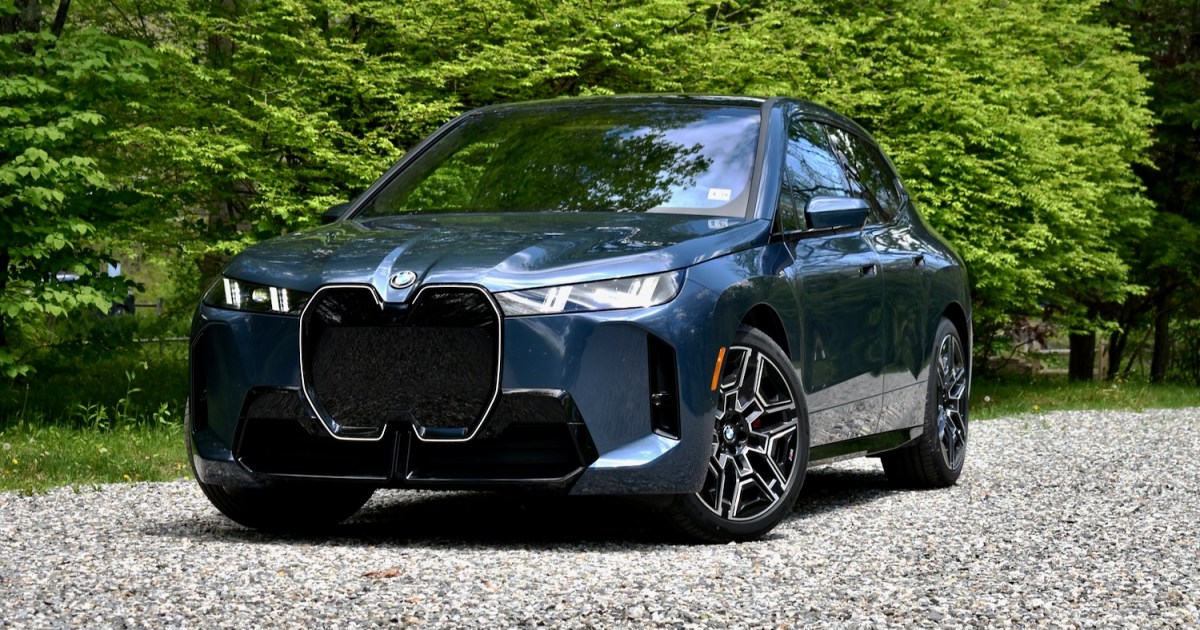Electric cars have given automakers a rare opportunity to throw out design and engineering conventions in favor of something truly new, and few automakers have exploited that opportunity like BMW.
The German automaker’s first attempt at a volume-production electric vehicle was the BMW i3, a small hatchback that dispensed with all expectations of what a car wearing BMW’s blue-and-white badge should be, with a novel shape and engineering to match its electric powertrain. While the i3 wasn’t a sales success, its spirit lives on in an EV at the opposite end of the price and size spectrum.
Introduced for the 2022 model year, the BMW iX is a large SUV that sits near the top of the automaker’s EV lineup. It’s now been on sale long enough to warrant a mid-cycle refresh — or Lifecycle Impulse (LCI), in BMW speak — that brings numerous improvements while carrying forward the ethos of the i3.
Still daring to be different
Like the i3, the iX is hard to ignore. The original model’s many detractors will be disappointed to learn that BMW has doubled down on the massive grille, which returns with optional illumination. More prominent air intakes on either side help balance it somewhat, though, while new headlights with prominent vertical elements give the refreshed iX a somewhat cross-eyed appearance.
Still, it’s nice to see a design that doesn’t blend into traffic — from some angles at least. The real issue here isn’t the grille, it’s that there isn’t much about the rest of the car that stands out. The thin taillights are unusual but subtle, and in profile view the iX’s tall-but-curvy shape makes it seem like BMW’s designers weren’t sure whether they were working on an SUV or a minivan.
The iX is hard to ignore.
In addition to following a similar design path, the iX borrows some of the i3’s impressive engineering. Its chassis uses a mix of aluminum, steel, and carbon fiber reinforced plastic (CFRP) similar to what was pioneered by the i3. But while CFRP should help reduce weight while retaining structural rigidity, although here the benefit is harder to see. BMW quotes a base curb weight of 5,567 pounds, which is not far off from a Mercedes-Benz EQE SUV with more conventional chassis construction.
For 2026, the iX lineup expands with a new iX xDrive45 base model priced below the xDrive60 and M70 xDrive, which are updated replacements for last year’s xDrive50 and M60 xDrive variants, respectively. The M70 xDrive has a slightly sportier appearance, with bigger front air intakes and a mini rear diffuser, but a similar look can be added to the other two models via an optional M Sport Package.
Performance improves — but does it matter?

All three 2026 iX models have dual-motor all-wheel drive powertrains, hence the “xDrive” branding. The base iX xDrive45 uses a 100.1-kilowatt-hour (usable capacity) battery pack and is rated at 402 horsepower and 516 pound-feet of torque. The other two use a larger pack, with different software that brings usable capacity to 113.4 kWh for the xDrive60 and 112.8 kWh for the M70. Either way, it’s more than the 109 kWh of all 2025 iX models.
Output increases too. While there’s no 2025-model-year analogue for the base xDrive45, the xDrive60’s 536 hp is a 20-hp gain over the xDrive50 it replaces (torque remains unchanged at 546 lb-ft). The M70 produces 650 hp and 811 lb-ft, which are gains of 40 hp and 62 lb-ft over the M60 it replaces. However, this sportiest iX model isn’t any quicker, still doing zero to 60 mph in 3.6 seconds, according to BMW.
Precise steering makes getting the most out of the chassis easy.
The M70 is still appreciably quicker than the xDrive45 and xDrive60, which reach 60 mph in a BMW-estimated 4.9 seconds and 4.4 seconds, respectively. But from the driver’s seat, all three models felt plenty quick. Even switching directly from the M70 to the xDrive45 didn’t feel like a downgrade; the base model was more than capable of mashing bodies into seats.
There wasn’t a dramatic difference in handling and ride quality, but that’s because BMW set such a high bar with the pre-facelift iX. This isn’t the sportiest BMW, but corners gracefully, with precise steering that makes getting the most out of the chassis easy. And it does that while retaining the cushioned ride of a true luxury car — even on the newly-optional 23-inch wheels. Much of this is due to rear-axle steering and adaptive air suspension that are standard on the M70, but can be added to the two lower-tier models with the Dynamic Handling Package. So again, it’s hard to justify the top-dog M70 when it comes to real-world driving.
More range, same charging speeds

The iX also boasts range improvements across the lineup. BMW estimates 340 miles for the xDrive60, 312 miles for the xDrive45, and 302 miles for the M70 xDrive. To put that in perspective, the 2025 iX topped out at 309 miles with a pack slightly larger than the one in the xDrive45. And the M60 xDrive — the equivalent to 2026’s M70 — could only muster 285 miles per charge.
BMW didn’t address charging, however. The xDrive60 and M70 still DC fast charge at 195 kilowatts like all 2025 models, while the xDrive45 reaches 175 kW. That’s still enough for a 10%-80% charge in 35 minutes, BMW claims, and the standard 11-kW AC onboard charger has a more competitive power rate. It should make overnight recharges at home a nonissue.
A refreshingly different interior with well-executed tech

The interior and tech features haven’t changed much, but that’s because they were already far ahead of the curve. In the spirit of the i3, the iX shows off what’s possible, but this time it’s a lead the rest of BMW’s lineup actually followed.
Since its 2022-model-year launch, the iX’s curved dashboard display — including a 12.3-inch digital instrument cluster and 14.9-inch touchscreen in one housing — has cropped up in other BMW models. It returns for 2026 looking as good as ever, and the iDrive infotainment system is fairly easy to navigate (wireless Apple CarPlay and Android Auto remain standard as well).
The stage for this tech is a cabin radically different to other BMW models. An angled dashboard and door panels provide visual interest while opening up space, as does the minimal center console that floats between the front seats. Available crystal controls further add to the whimsical atmosphere. For 2026, those wanting a more stereotypically BMW appearance can also spec an M Sport Package with a chunky steering wheel and seats with extra bolstering.
The base model is the one to have

The iX was a great luxury EV at its launch, and the enhancements for 2026 help it keep pace with rivals. But most significant is the iX xDrive45 model’s base price of $76,325—$11,920 less than the least-expensive 2025 model. That also makes the 2026 iX cheaper than rivals like the Mercedes-Benz EQE SUV and Volvo EX90, while offering more range than an equivalently-priced Rivian R1S.
BMW also keeps pricing in check for the other two iX grades. The xDrive60 starts at $89,675—$1,430 less than the xDrive50 model it replaces. The M70 xDrive costs $112,675—the same as the equivalent M60 model from 2025.
While the xDrive60 offers more range, and both it and the M70 offer more power and a higher DC fast-charging power rate, the actual driving experience isn’t different enough to warrant upgrading from the xDrive45. That model’s lower base price leaves plenty of headroom for options, so you can spec it how you want without FOMO. And in today’s car-buying environment, that feels like a major win.
Read the full article here













